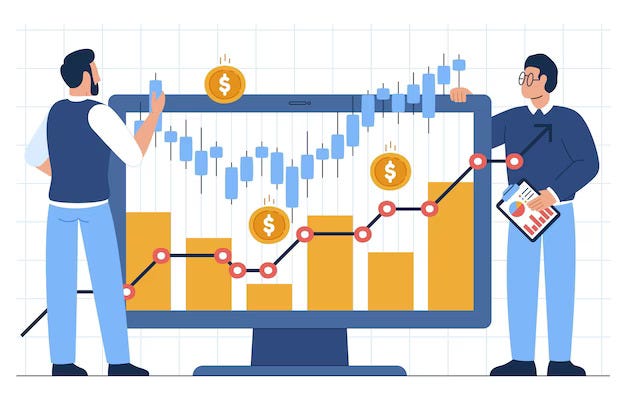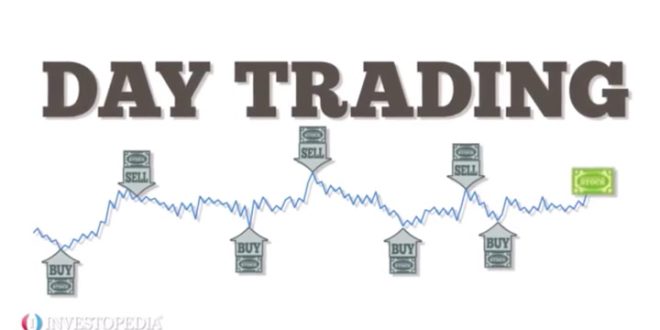Day trading commodities can be an exhilarating and potentially profitable venture for those who are willing to put in the time, effort, and dedication. It’s a world where traders seize opportunities in the fast-paced movement of tangible assets like energy, metals, and agriculture products. In this comprehensive guide, we’ll delve into the essential aspects of day commodity trading, from understanding the market dynamics to refining your skills through practical learning with the help of a commodities trading academy. So, let’s embark on this journey of mastering the art of day trading commodities.
Understanding Commodities and Market Dynamics
What Are Commodities?
Commodities are the lifeblood of global economies. These tangible assets, such as crude oil, gold, soybeans, and more, hold intrinsic value and play a vital role in various industries. The commodities market encompasses spot markets, futures markets, and derivatives, all influenced by factors like supply and demand, geopolitical events, and economic indicators.
The Commodities Market Landscape
Navigating the commodities market requires understanding its intricate landscape. Spot markets involve the direct buying and selling of physical goods, while futures markets allow traders to speculate on future price movements. Derivatives add complexity, enabling traders to hedge or speculate using contracts. The ebb and flow of commodity prices are often shaped by global events, making staying informed a critical component of successful trading.

Essential Preparations for Day Trading Commodities
- Knowledge Is Power: Education and Research
Before entering the world of commodity trading, a solid education is essential. Stay updated on market news, trends, and analysis through reputable sources or learn through a commodities trading academy like Queensway Academy. Understanding the historical context and current events affecting commodities can inform your trading decisions.
- Setting Up Your Trading Toolkit
To thrive in day trading, you need the right tools. A robust computer, high-speed internet, a user-friendly trading platform, and efficient charting software are your essentials. Access to real-time data ensures you’re making informed decisions in the split seconds that matter.
- Risk Management and Capital Allocation
Risk management is non-negotiable in day trading. Define your risk tolerance and set stop-loss orders to mitigate potential losses. Allocating an appropriate amount of capital to your trades is crucial; never invest more than you can afford to lose.
Strategies for Successful Day Trading
- Scalping – Scalping involves profiting from small price movements over short timeframes. It’s a strategy that demands attention to technical analysis and indicators. Scalpers aim to capitalise on market inefficiencies and quick price fluctuations.
- Momentum Trading – Momentum traders ride the waves of trends and momentum shifts. This strategy relies on volume and price confirmation, allowing traders to hop on board strong market movements.
- Breakout Strategies – Breakout trading centres on identifying price range boundaries and capitalising on breakout patterns. Confirming breakouts with volume and price movement patterns enhances the success of this strategy.
Technical Analysis and Chart Patterns
- Candlestick Patterns – Candlestick patterns offer insights into market sentiment. Patterns like Doji, Hammer, and Shooting Star can signal potential price reversals or continuations.
- Support and Resistance – Identifying support and resistance levels aids in predicting price movements. Support acts as a floor, while resistance acts as a ceiling. Trading off these levels requires careful analysis of historical price data.
- Moving Averages – Moving averages smooth out price data, revealing trends. The crossover strategy, involving short-term and long-term moving averages, helps confirm trend changes.
Developing a Trading Plan and Psychology
- Creating a Trading Plan
A well-defined trading plan is your roadmap to success. Set clear goals, outline strategies, establish risk management rules, and define your trading timeframes. Regularly review and adapt your plan as market conditions evolve.
- Emotions and Discipline
The psychology of trading can be your greatest enemy or ally. Emotions like fear and greed can cloud judgment. Cultivate discipline and stick to your trading plan, regardless of emotional impulses.
Practising and Refining Your Skills
- Demo Trading
Before risking real capital, practice with demo accounts. Demo trading allows you to refine your strategies, test new approaches, and familiarise yourself with the trading platform.
- Learning from a Trading Academy
Enrolling in a commodities trading academy like Queensway Academy offers structured learning. From understanding market dynamics to advanced trading strategies, these academies provide valuable insights from experienced professionals.
In conclusion, day trading commodities is a dynamic journey that demands knowledge, preparation, and discipline. Understanding the market landscape, honing strategies, mastering technical analysis, and managing psychology are essential components of success. By continuously learning, practising, and refining your skills, you can navigate the exciting world of trading commodities with confidence. Remember, the road to mastery is paved with dedication and a thirst for knowledge.

I’m a professional writer specializing in cryptocurrency. I have over 5 years of experience writing about Bitcoin, Ethereum, Litecoin, and other digital assets. In addition to my work as an author, I’m also a highly respected speaker on the topic of cryptocurrency. I have spoken at numerous conferences and meetups around the world, and am always up-to-date on the latest developments in the space.
 Crypto Print
Crypto Print

